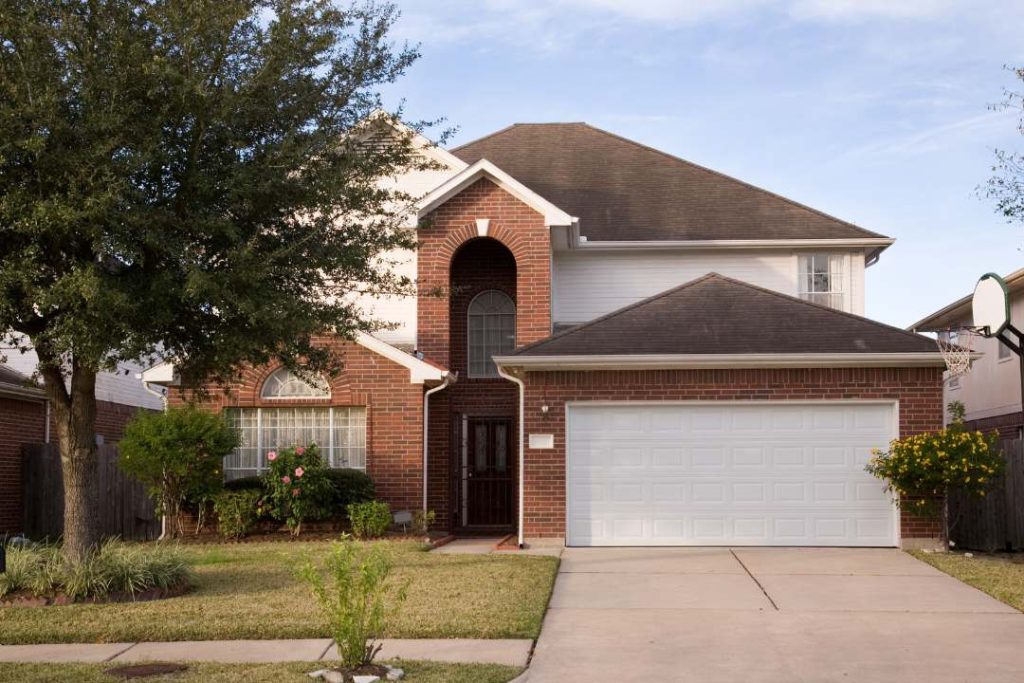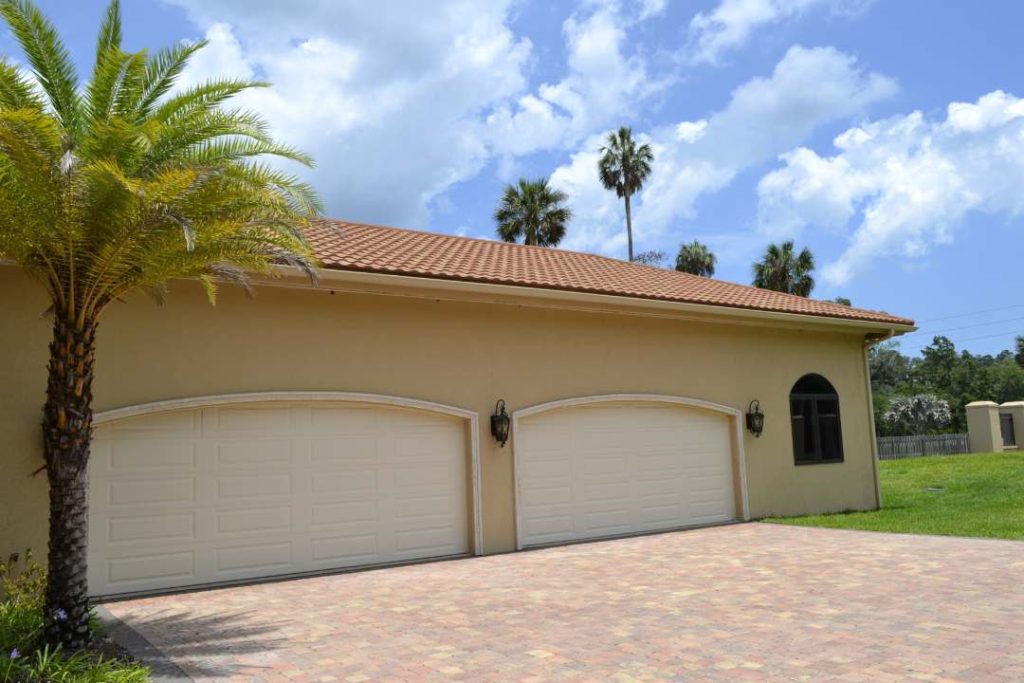
Scottsdale’s desert climate, with its scorching summers and seasonal monsoons, poses unique challenges to garage doors, leading to issues like warping, seal degradation, and mechanical failures if not properly maintained. By understanding these impacts and implementing protective measures, homeowners can extend their garage door’s lifespan and maintain home efficiency.
Scottsdale’s Climate Overview
Scottsdale experiences extreme heat, with summer temperatures often exceeding 110°F, alongside intense UV exposure year-round. Mild winters rarely dip below freezing, but the real threats come from rapid temperature swings and the monsoon season from July to September, bringing high winds, heavy rain, and haboobs.
These conditions accelerate wear on garage doors, as metal components expand and contract, while seals dry out from aridity. Dust storms during monsoons add abrasive grit to tracks and rollers, hastening deterioration.
Homeowners in upscale neighborhoods like Gainey Ranch or McCormick Ranch must prioritize durable materials to combat this environment. Proper preparation not only prevents costly repairs but also enhances energy efficiency in attached garages.
Extreme Heat’s Toll on Garage Doors
Intense summer heat causes metal garage door panels and frames to expand, leading to misalignment in tracks and rollers. This expansion can make doors stick or bind during operation, straining the opener motor and risking burnout.
High temperatures also degrade lubricants in hinges and springs, causing them to thicken and reduce smooth movement. Over time, this leads to noisy operation and premature component failure, especially in non-insulated doors that absorb radiant heat.
Wooden or composite doors warp under prolonged exposure, creating gaps that allow hot air infiltration into the home. In Scottsdale’s 100+°F days, uninsulated garages can reach oven-like internals, damaging stored items like tools or vehicles.
To mitigate heat expansion, opt for insulated steel doors with polyurethane foam cores, which maintain structural integrity. Reflective coatings on panels bounce back solar heat, keeping surface temperatures lower.
Regularly parking vehicles away from the door prevents reflected sunlight from intensifying heat buildup. These steps solve common sticking issues and preserve the door’s alignment.
Sunlight and UV Damage Effects
Arizona’s relentless sun bakes garage doors facing south or west, fading paint and cracking finishes within a few years. UV rays break down protective coatings, exposing metal to oxidation and rust.
For painted doors, the finish burns off, leading to a chalky appearance and reduced curb appeal in Scottsdale’s aesthetic-focused communities. Vinyl or rubber weather seals become brittle, shrinking and allowing dust entry.
Unprotected wooden doors splinter and delaminate from UV assault, compromising weather resistance. This degradation lets pests and allergens infiltrate, affecting indoor air quality.
Applying UV-resistant paints or laminates creates a barrier against fading. Adding awnings or solar screens over the door shades it from direct rays, preserving color and seal flexibility.
Reapplying a fresh coat of high-quality exterior paint annually solves aesthetic and functional problems. These protections extend door life by 5-10 years in sunny climates.
Monsoon Season’s Destructive Forces
Scottsdale’s monsoons deliver gusts up to 60 mph, forcing lightweight doors off tracks or bending panels. Flying debris from these storms dents surfaces, while sudden downpours overwhelm poor drainage.
High winds stress torsion springs, increasing breakage risk during operation. Rain seeps through cracked seals, promoting rust on internal hardware and electrical components in the opener.
Haboob dust storms coat rollers with fine grit, causing grinding and accelerated wear. Flooding around the garage foundation shifts the structure, misaligning the door frame over time.
Upgrading to wind-rated doors meeting local building codes withstands 120+ mph gusts common in Arizona storms. Reinforcing tracks with heavier-gauge steel prevents derailment.
Installing rubber bottom seals and threshold guards blocks water intrusion. Clearing gutters and grading soil away from the garage solves flooding risks effectively.
Dust and Debris Challenges
Desert dust in Scottsdale abrades moving parts, with sand particles embedding in tracks and rollers during haboobs. This grit acts like sandpaper, wearing down bearings and shortening opener life.
Fine dust infiltrates seals, settling on springs and cables, leading to corrosion when mixed with monsoon moisture. Poorly sealed doors let debris accumulate inside, damaging stored vehicles or equipment.
High winds blow pollen and allergens through gaps, exacerbating indoor allergies for Scottsdale residents. Over time, dust buildup increases energy use by reducing insulation effectiveness.
Tightening weatherstripping around the door perimeter keeps dust out. Using high-quality silicone lubricants repels grit better than petroleum-based ones.
Installing air filters or brush seals on the door’s interior edges traps airborne particles. Vacuuming tracks monthly during dusty seasons prevents buildup and maintains smooth function.
Year-Round Maintenance Strategies
Routine inspections every three months catch issues early, like loose hardware from heat expansion. Lubricating all moving parts with garage-door-specific grease ensures quiet, efficient operation.
Replacing worn seals annually prevents energy loss and pest entry, a common problem in arid climates. Balancing the door by adjusting springs evenly distributes weight, reducing motor strain.
For insulation, adding foam panels to existing doors boosts R-value, blocking 30-50% more heat transfer. Choosing light-colored doors reflects sunlight, lowering internal temperatures.
Testing the auto-reverse safety feature monthly verifies it stops on obstruction, crucial during windy debris events. Programming openers with smart features allows remote monitoring for storm damage.
Documenting maintenance with photos helps track wear, informing timely upgrades. These habits solve 80% of weather-related problems without professional intervention.
Professional Solutions for Long-Term Protection
When DIY fixes fall short, experts assess structural damage from monsoons or heat warping. Certified technicians install impact-resistant doors tailored to Scottsdale’s codes.
Professional lubrication and spring replacement use industrial-grade parts for durability in extreme conditions. Energy audits identify insulation gaps, optimizing for Arizona’s heat.
Upgrading to insulated, steel-clad doors with thermal breaks prevents condensation and rust. Wind-load testing ensures compliance with local storm requirements.
Technicians like those at specialized firms provide warranties on repairs, offering peace of mind. Scheduling bi-annual tune-ups preempts failures during peak seasons.
For custom solutions, consult pros who understand desert-specific challenges. This expertise ensures your garage door withstands Scottsdale’s weather reliably.
In Scottsdale’s demanding climate, proactive care keeps your garage door functional and efficient. For expert installation, repair, or maintenance tailored to local weather, contact High Grade Garage Doors at (602) 837-1888. Their team specializes in durable solutions that protect your home year-round.


